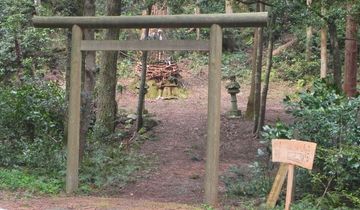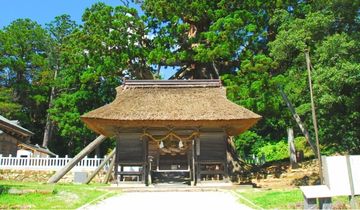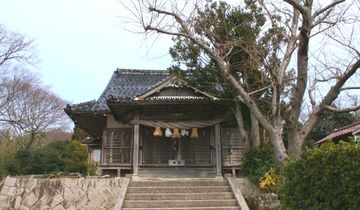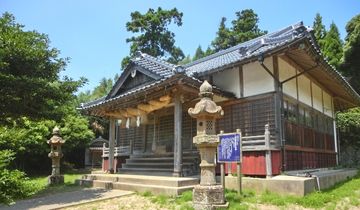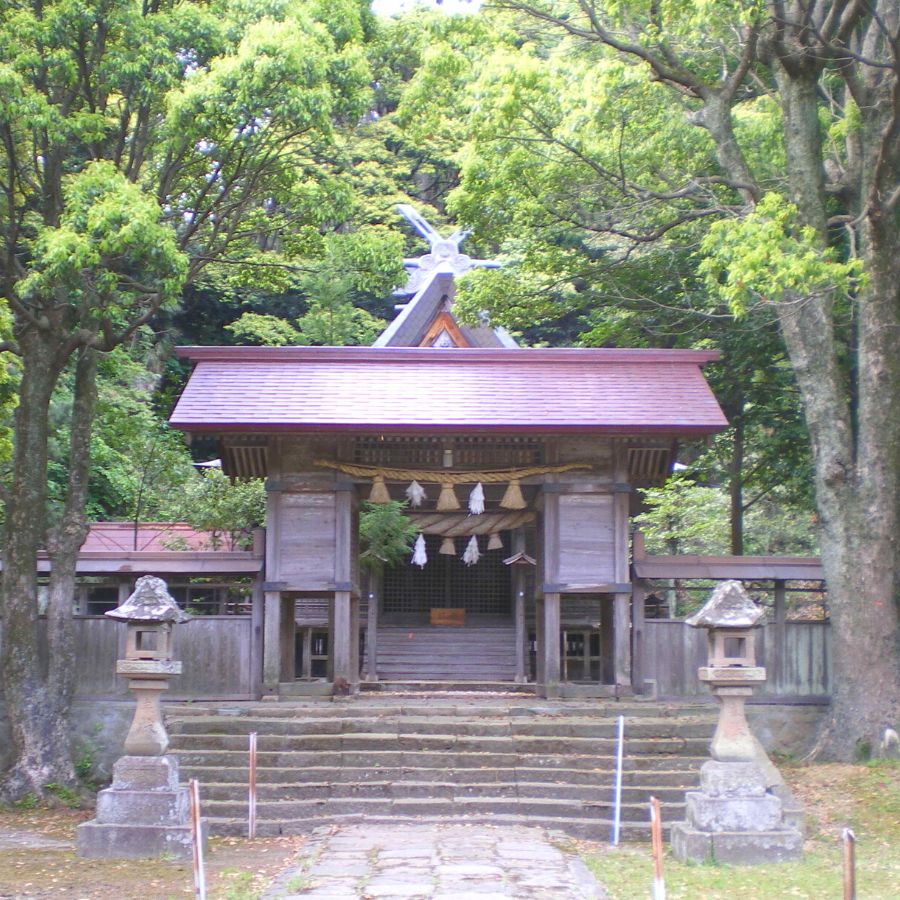
Lifestyles and Traditions - Shrines
According to the Shoku Nihon Kōki (an officially commissioned Japanese history text completed in 869), Ise-mikoto Shrine was classified as a Myojin Taisha (a very high rank of shrine) in the year 849. The present main shrine building was built in the unique oki-zukuri architectural style in 1841. Although its roof was replaced with copper plates in the Shōwa era (1926–1989), it is a magnificent structure decorated with carvings of dragons.
According to legend, a divine light came from the sea at night and stopped at a place called Azakariya; it is said to have shone every night until it received an oracle and enshrined Ise-myōjin. The shrine was later moved to its present location due to strong northwesterly winds. However, since ruins from the Yayoi period (c. 300 BCE–250 CE) have been discovered in Azakariya, the legend of landing in the Kumi area is imagined to be a historical fact.
The shrine's deity is Ise-no-mikoto, whose name is not mentioned in the Kojiki or other writings, and not much information is known today because the ancient records of the shrine were destroyed in a fire. According to oral legend, it has also been said to enshrine either Sarutahiko or Jingū-kōgō (Empress Jingū). Some believe the name indicates a connection to Ise Grand Shrine in Mie Prefecture, or the Ise region's Isobe area.
Kumi Kagura, an Intangible Folk Cultural Property of Shimane Prefecture, is performed at the shrine on July 15 in odd-numbered years and July 16 in even-numbered years.


